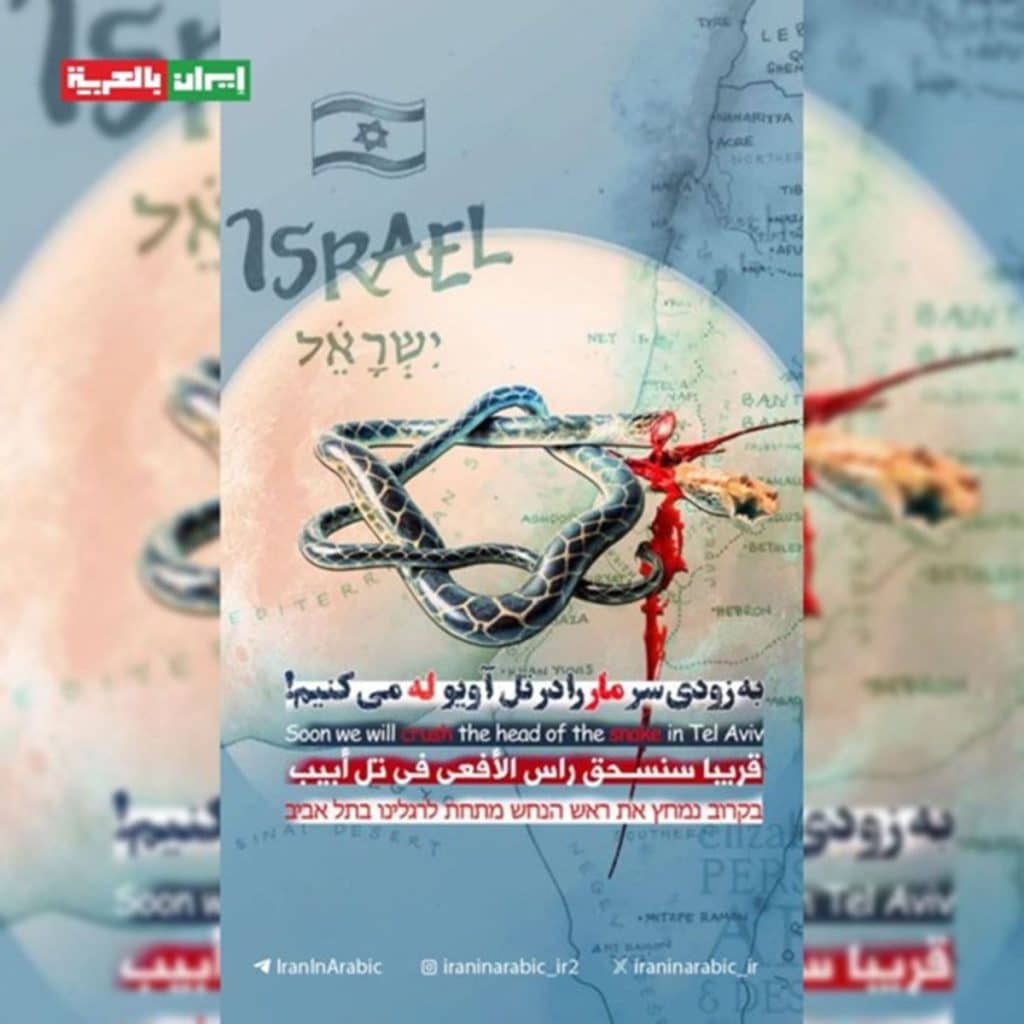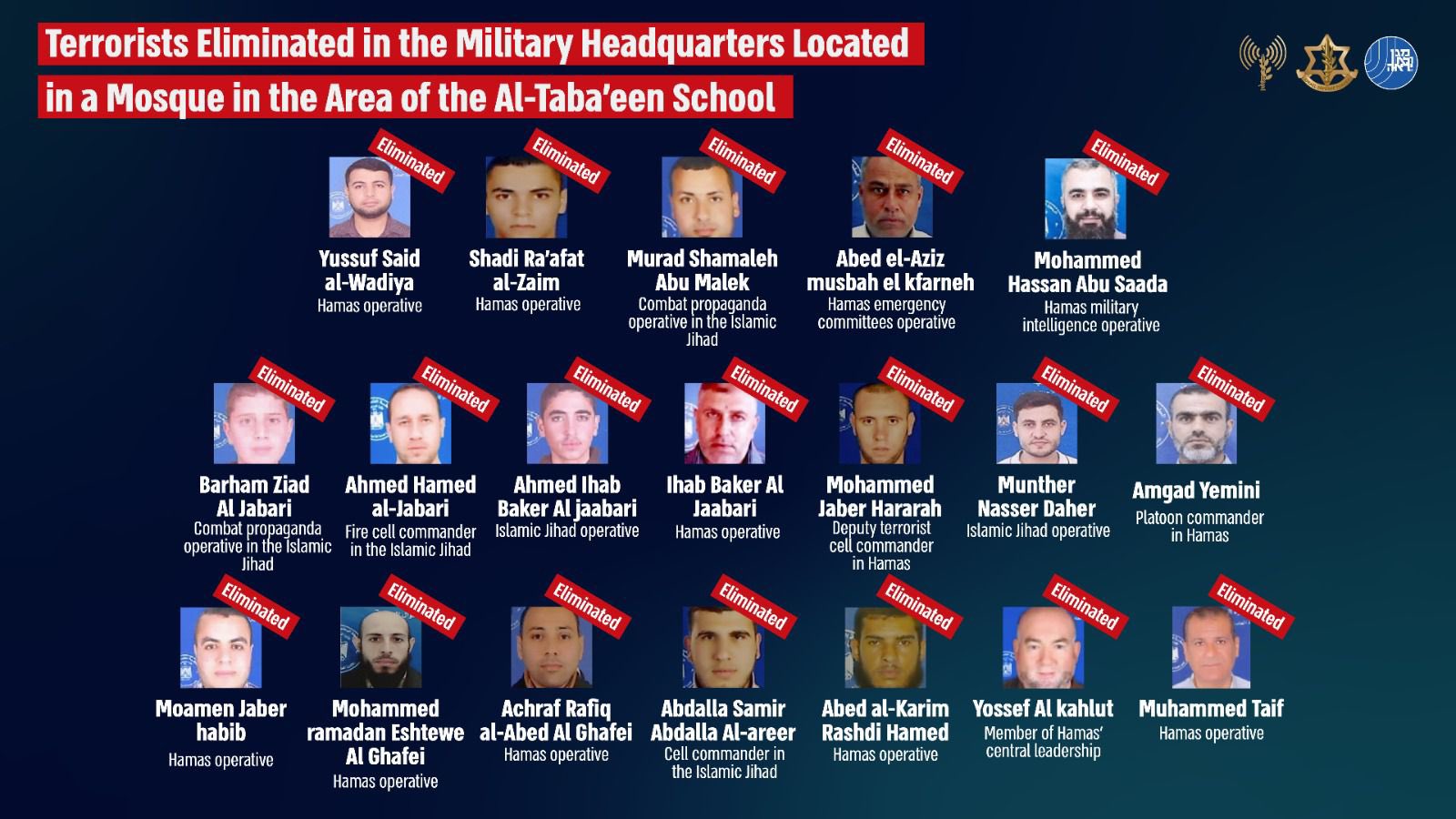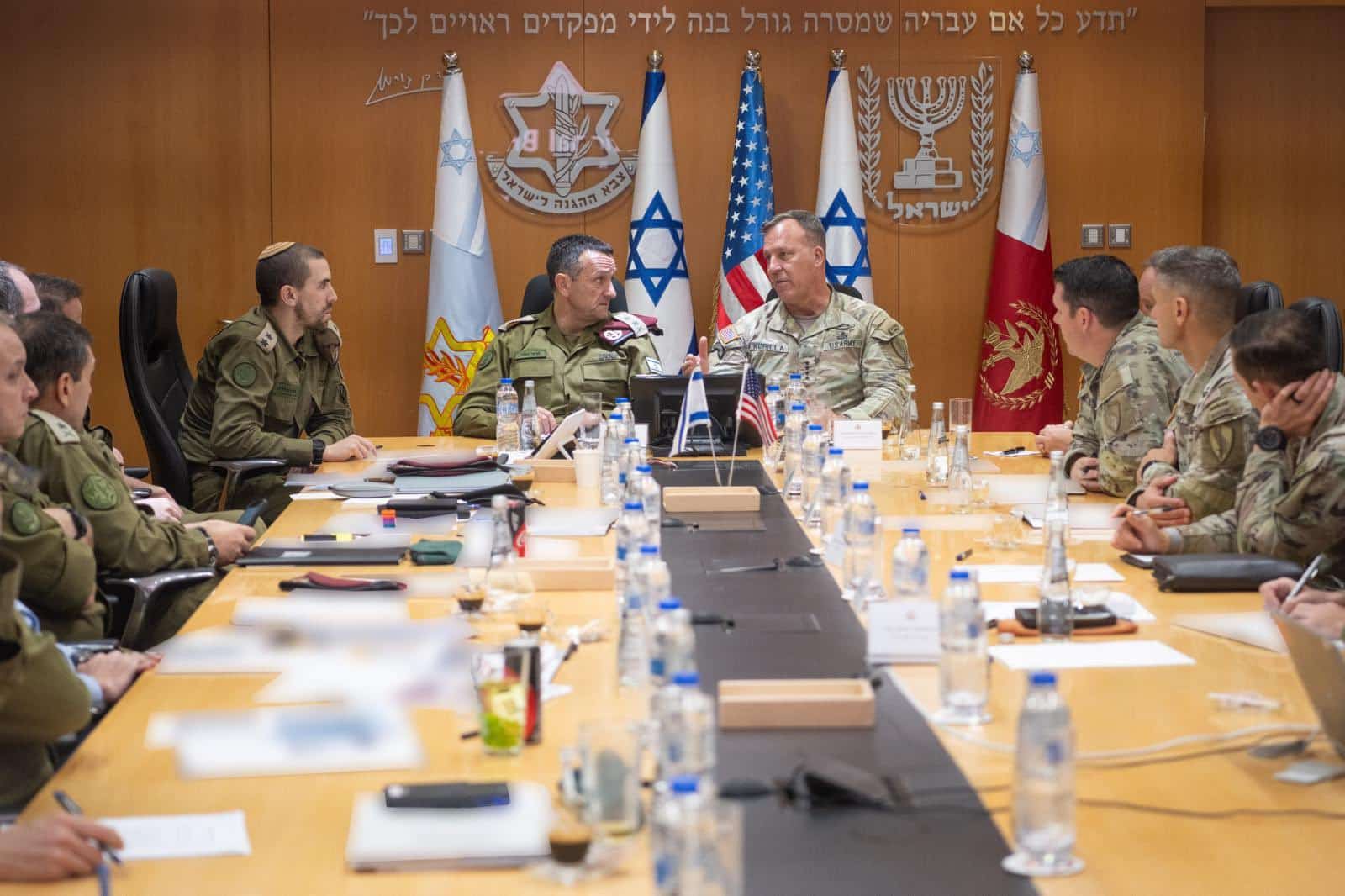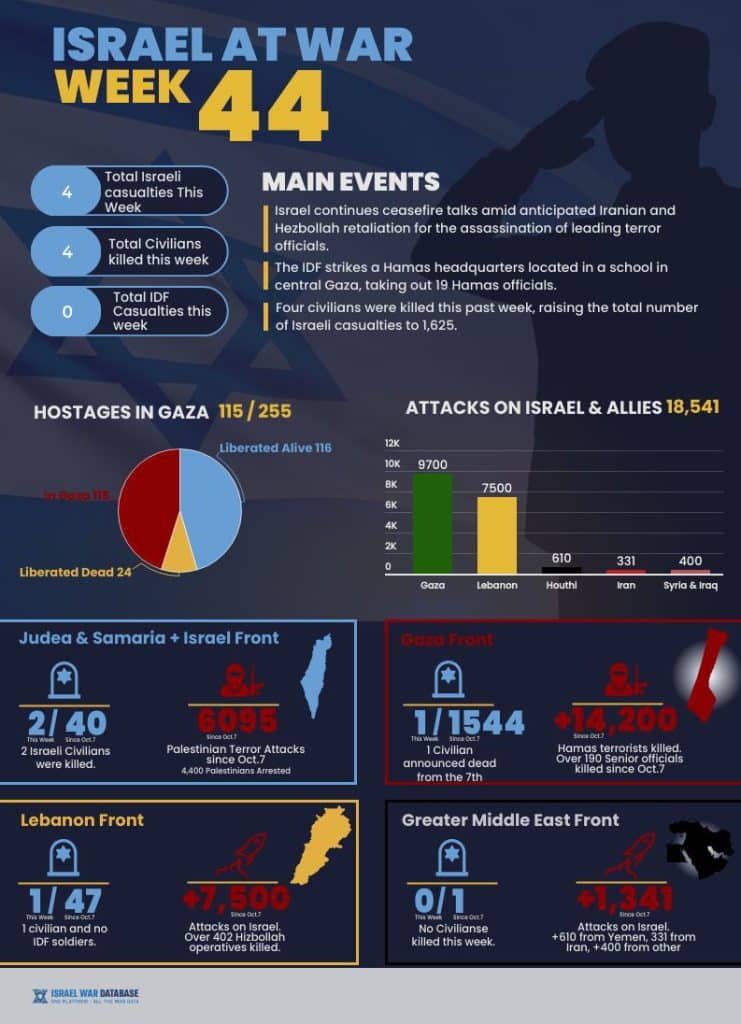
Overview
- According to multiple estimates, two waves of attacks against Israel are expected. The first will mainly be carried out by Hezbollah, from which Iran will draw conclusions and then strike itself.
- S. CentCom commander, General Michael Kurilla met with the IDF Chief of Staff and the Air Force Commander during his second visit to Israel within a week.
- The aircraft carrier, USS Abraham Lincoln, along with a squadron of American F-22 Raptor jets landed in the Middle East, as the U.S. warned Iran not to attack.
- Jibril Rajoub, Secretary of Fatah’s Central Committee, stated that Yahya Sinwar is pragmatic, realistic, and rational, and that the decision to choose him was the logical and expected response to the assassination of Haniyeh.
- On August 8th, the U.S., Egypt, and the UAE called on Israel and Hamas to renew cease-fire talks in Cairo or Doha based on the Biden framework and the proposal approved by the UN Security Council on June 10th
- Division 98 is conducting its second operation in less than 3 weeks in eastern Khan Yunis,
Iranian Axis’ Planned Attack
Israel is anticipating a multi front attack from the Iranian axis as a retaliation for the two significant assassinations two weeks ago. which included Hamas’ leader, Ismail Haniyeh and Hezbollah’s second in command, Fuad Shukr.
On August 7, at a meeting of Iran’s “Supreme National Security Council,” Khamenei ordered the preparation of a powerful attack plan. On August 8, he declared that Iran must avenge the killing of Haniyeh and is ready to respond forcefully. On the same day, the deputy commander of the Revolutionary Guards confirmed that he had received such orders from Khamenei.
According to multiple estimates, two waves of attacks against Israel are expected. The first will mainly be carried out by Hezbollah, from which Iran will draw conclusions and then strike itself. This is because Hezbollah is in greater urgency to attack following the killing of its chief of staff and constant attacks on its territory, with the destruction of terror infrastructure and the elimination of many terrorists.
Iran might launch a missile capable of carrying a nuclear warhead (without an actual warhead) for nuclear deterrence but attempt to achieve only limited damage to avoid escalating to a full-scale war. While Iran is taking its time planning its response, Hezbollah is under increasing pressure, as the IDF is continuously attacking in Syria and southern Lebanon, causing damage and eliminating its operatives, even after the assassination of Shukr. On August 6th, Nasrallah declared that Hezbollah would eventually attack Israel. Part of their strategy is the psychological warfare on Israeli citizens, that is designed to cause nationwide anxiety and stress. He also changed the definition of the war from “war of support” of the Palestinians to a “new phase” and a “great battle” that includes the entire region.
However, Nasrallah was heavily criticized and mocked in Lebanon for seemingly backtracking on his initial bellicose statements, pleading listeners to wait “step by step” and that the goal of the war is to “prevent Israel from winning”. On August 8th, the Houthi spokesperson declared that the delay in their attack against Israel is only tactical, meaning they too will strike.
Internal Disputes in Iran
It was reported that there is a dispute between Iranian President Masoud Pezeshkian and the top leadership of the Iranian Revolutionary Guards. While the leadership wants to strike in the heart of Tel Aviv and cause significant damage, Pezeshkian reportedly prefers a more limited attack to avoid full escalation and to be in a better position to start new nuclear talks with the West. Pezeshkian prefers a limited strike against secret Israeli military targets, such as in Azerbaijan or Iraqi Kurdistan. However, Iranian Supreme Leader Khamenei is the one who ultimately will decide the nature of the attack.
Tehran faces a signifiant dilemma. An overwhelming response—such as one causing numerous casualties, damaging a power station, or targeting government institutions—would likely provoke a significant retaliatory Israeli strike, leading to regional escalation, which Iran itself wishes to avoid as it would result in more attacks on its own territory, potentially threatening its nuclear program. On the other hand, a weak response that is easily intercepted by Israel and her allies, would only strengthen the “Abraham Accords” and further damage Iran’s reputation.
Iran might opt for a middle path of carrying out an attack that causes limited damage, such as striking a remote base in Israel. Alternatively, it could place full responsibility on Hezbollah, thereby putting the group at risk, or risk its strategic assets in Syria by launching attacks primarily from there.
On August 5th, Defa Press, an Iranian military-controlled news agency, published a list of 23 targets for an upcoming attack on Israel, including eight Air Force bases, two airports, three gas platforms, five power stations, and the ports of Haifa, Ashdod, Eilat, the Kirya in Tel Aviv, and the Knesset in Jerusalem.
- Saudi officials have indicated that they will not allow foreign objects to fly over their territory, hinting that the S. air defense systems deployed in the kingdom will intercept Houthi launches.
- During his visit to Tehran, Jordanian Foreign Minister Ayman Safadi attempted to dissuade Iran from attacking, stating that neither Israel nor Iran would be allowed to use Jordanian airspace, suggesting that at the very least, U.S. and Jordanian air forces would intercept Iranian launches.
US Preparation Ahead of the Attack
- The Iranian news agency Defa accuses the United States of disrupting GPS systems in Iran to reduce the efficiency of launching drones from its territory and the overall, effectiveness of radar systems. This, they claim, would assist in an Israeli-American aerial attack against Iranian targets.
- S. Central Command commander, General Michael Kurilla met separately with the IDF Chief of Staff and the Air Force Commander during his second visit to Israel this week.
- The U.S. approved the transfer of $3.5 billion in munitions to Israel (as part of a $14.1 billion package approved by Congress in April).
- The U.S. has approved the transfer of two types of bombs, the MK-83 (500 kg) and MK-82 (250 kg), to Israel, with 1,700 bombs to be delivered. There are ongoing discussions to transfer 1,800 MK-84 bombs (1 ton). During Netanyahu’s visit to the U.S., he urged Biden to expedite the delivery.
- An F-18 squadron landed in Jordan, and Cyprus and will serve as forward bases for American and British air forces to intercept the expected Iranian attack. Germany will assist in the event of mass casualties requiring evacuation.
- The aircraft carrier, USS Abraham Lincoln along with a squadron of American F-22 Raptor jets landed in the Middle East, as the U.S. warned Iran not to attack.
Diplomatic Efforts
Iranian President Masoud Pezeshkian and French President Emanuel Macron held a phone conversation on Wednesday. Macron tried to persuade Pezeshkian not to attack Israel, but Pezeshkian insisted on Iran’s right to respond, stating that if the West truly desires de-escalation, it should convince Israel to accept a ceasefire. Meanwhile, Russia is trying to persuade Iran to direct its attack against military rather than civilian targets to prevent full-scale escalation. Russia is also increasing the delivery of radar and air defense systems to Iran, which can be deployed in Syria.
International
- Israel imposed additional sanctions on Norway due to its unilateral recognition of a Palestinian state. Foreign Minister Israel Katz announced that Israel is revoking the status that allows the Norwegian diplomatic team to operate in the Palestinian Authority, effectively ending all representation from the Norwegian Embassy in Israel toward the Palestinian Authority. Israel also decided to cancel the fiduciary arrangement with Norway for safeguarding the clearance revenues intended for the Palestinian Authority.
- Jibril Rajoub, Secretary of Fatah’s Central Committee, stated that Yahya Sinwar is pragmatic, realistic, and rational, and that the decision to choose him was the logical and expected response to the assassination of Haniyeh.
- The commander of the Revolutionary Guards, Hassan Salami, sent a congratulatory letter to Yahya Sinwar, stating that the announcement of his selection is “a reviving light” after the death of Ismail Haniyeh and that it has sown fear and terror in the hearts of the “Zionists.” He called on Hamas to continue the “path of the martyrs and fighters” and to fulfill the promise of liberating “Palestine” and its capital, Jerusalem. Salami emphasized that he and the Revolutionary Guards would not hesitate to support the movement and all “resistance” organizations. Ismail Qaani, commander of the “Quds Force,” which is responsible for terrorist activities abroad and targets Jewish and Israeli interests overseas, sent a letter to Yahya Sinwar congratulating him on his appointment as the head of Hamas’s political bureau and stated, “We will avenge the death of Ismail Haniyeh.”
- Jordan-Iran Diplomatic Engagement: Jordanian Foreign Minister Ayman Safadi made a rare visit to Iran to discuss regional developments and escalating tensions following Iranian threats to attack Israel in response to the death of Haniyeh. Safadi met with Iranian President Masoud Pezeshkian and Acting Foreign Minister Ali Bagheri Kani. Safadi is the first Jordanian foreign minister to pay an official visit to the Islamic Republic since 2015.

Gaza Strip
Diplomatic
Hostage Deal
- On August 8th, the U.S., Egypt, and the UAE called on Israel and Hamas to renew cease-fire talks in Cairo or Doha based on the Biden framework. The proposal approved by the UN Security Council on June 10th to avoid a full-scale war and reach a ceasefire. The new proposal is intended to bridge the gaps between the two sides and address several points of contention between them. Israel approved the departure of its delegation for negotiations on August 15th, but Hamas has not yet confirmed.
- Sinwar is insisting on a full withdrawal of the IDF from the Gaza Strip and the release of all security prisoners, including Marwan Barghouti and Ahmad Sa’adat, the deputy secretary-general of the Popular Front for the Liberation of Palestine (which would earn him significant support among the followers of other terror factions and position him as the leader of the Palestinian camp). In Doha, Husam Badran of Hamas and the Secretary-General of the Popular Front met to coordinate positions for continued fighting, while they also congratulated Sinwar on his appointment.
- The Iranian delegation to the UN stated that the timing and nature of the Iranian attack would not allow for the resumption of negotiations, possibly hinting at the expected potency of the attack, which would likely rule out the possibility of renewed nuclear talks and also the possibility of a prisoner exchange deal.
- In the latest round of talks in Cairo, Israel added a new demand for a hostage deal: 150 Palestinian security prisoners with blood on their hands, who are to be released, must be sent into exile and not be allowed to move to Gaza or Judea and Samaria.
Sinwar Chosen to Head Hamas’ Political Bureau
Sinwar’s appointment as Chairman of the Political Bureau strengthens Hamas’s ties with Iran, contrasting with Haniyeh’s efforts to also approach the Gulf states. Sinwar will appoint Khalil al-Hayya, the former deputy chairman, and Zaher Jabareen, the head of Hamas in Judea and Samaria (operating from abroad), as his deputies. Both have close ties with Iran, indicating that Hamas will have closer cooperation with Hezbollah and the broader Shia axis of resistance.
The Hamas leadership has officially moved from abroad to the Gaza Strip. Final decisions are no longer made in Doha but rather in one of the tunnels under the humanitarian zone. Fatah, the Popular Front, Islamic Jihad, and other terror factions have congratulated Sinwar on his appointment. Nasrallah stated that his appointment should be seen as a message to Israel and the U.S. about the determination of “Jihad and resistance.” Sinwar appointed Khalil al-Hayya to lead the negotiations for a prisoner exchange deal.
Operational
Central Camps
Battle groups of the Jerusalem and Alexandroni Brigades are fighting northeast of Bureij, where a tunnel with a total length of 3 kilometers was destroyed. They located, investigated, and destroyed a complex underground passage of the tunnel, featuring multiple floors, rooms, and weapons storage facilities, including equipment for prolonged stays by terrorists.
The tunnel was 2.5 kilometers south of the Nezarim Corridor, indicating that the terrorists planned to stay underground for some time and then launch surprise attacks against the IDF troops stationed along the corridor during maneuvers in Bureij and the central camps.
Hamas’s Minister of Economy in Gaza, who was involved in the terrorist organization’s weapons production headquarters and in pillaging humanitarian aid and redistributing food, gas, fuel, and funds for terrorist activities, was killed by the IDF.
Gaza City
The Air Force attacked terrorists operating inside the grounds of a school in Daraj Tuffah under the direction of the Shin Bet and Military Intelligence as they were planning their next attack. Hamas, initially reported approximately 100 casualties but later on Bloomberg reported that Hamas downgraded their assessment to 40, as the IDF published the names of the 20 terrorists who operated from the command center and who were eliminated in the strike. Benefiting from improved and precise intelligence, the Air Force, continues to thwart terrorists and Hamas’s command chain in the northern part of the Gaza Strip, focusing on schools that serve as shelters for displaced persons and where Hamas chooses to embed itself.
Khan Younis
Division 98 is conducting its second operation in less than 3 weeks in eastern Khan Yunis to stamp out ongoing terrorist activities. The operation was initiated based on new intelligence about terrorists and Hamas’s attempts to reconstitute themselves in the area.
The IDF distributed leaflets calling on residents to provide the IDF with information about the location of Hamas leadership, to emphasize the sense that the IDF is winning the war, and will eventually, defeat the terror organization, and that those who provide the information will receive protection and rewards.
The IDF issued an evacuation notice in Arabic to the residents of eastern Khan Yunis. Residents of five towns, including Bani Suheila, and at least five different neighborhoods were ordered to immediately move westward into the humanitarian zone. Brigade 7, alongside the Paratroopers Brigade, is carrying out intelligence-driven raids on terror infrastructure in the area, with dozens of terrorists eliminated in Khan Yunis in the current operation.
Rafah Area
The main resistance is still in Tel Sultan, and it is possible that between Tel Sultan and the nearby humanitarian area, there is some kind of tunnel network through which resistance pockets receive reinforcements in the form of terrorists and weapons to continue the fighting.
During the past week, the 605th Engineering Battalion operated along the Philadelphi Corridor to locate additional terror infrastructures. They discovered and destroyed many rocket launch pits. The pits were located 230 meters from large fuel depots in the Gaza Strip. The terrorists intentionally built the pits in this location, knowing that an Air Force attack could cause a massive fire, resulting in the deaths or injuries of citizens.
- On August 8th, an article was published on the IDF website featuring an officer who has been dealing with the issue of tunnels for 15 years. He described them in terms of an ailing human body, stating that tunnels cannot be destroyed by merely eliminating the shafts; it’s essential to find the central points within the tunnels. These tunnels contain command and control centers, gathering points, armament sites, and weapon production facilities. Each tunnel is different, and only after mapping and studying them can they be destroyed. The renewed operation in Khan Yunis aims to achieve this objective, similar to operations in Rafah and northern Gaza.
- Over 30 tunnels crossing into Egypt have been discovered underneath the Philadelphi Corridor. Operations by Division 162 have uncovered a network of tunnels totaling 100 km in length, one of which included a rail system for transporting heavy materials. Hamas’s Rafah Brigade has been digging these tunnels for years, and the IDF will need several more months to systematically and thoroughly destroy them.

Lebanon
Diplomatic
- Defense Minister Yoav Gallant warned Hezbollah that any attack (in response to the assassination of Shukr) could lead to a full-scale war and warned that Hassan Nasrallah would cause Lebanon to pay a heavy price. This warning was directed at the Shia terrorist organization, cautioning them not to escalate the situation or target population centers and military installations as a form of retaliation for the assassination.
- In a speech on Tuesday, Nasrallah stated that Hezbollah is fighting to prevent the destruction of the Palestinian cause. He praised Fuad Shukr for his role in strengthening Hezbollah and for fighting Israel.
Operational
- The Air Force attacked terror infrastructure and terrorist cells in southern Lebanon. In an airstrike in the Sidon area on Friday, a Hamas terrorist responsible for rocket fire at northern Israel and recruiting terrorists in the local Palestinian refugee camp was eliminated.
- In one of Hezbollah’s attacks, 4 drones penetrated Israeli airspace—one was intercepted, and the other 3 fell in open areas. Around noon, 2 drones entered Israeli airspace, reaching Nahariya 10 minutes after being detected without being intercepted. Their impact, along with the fall of an interceptor that missed the drones and hit civilians instead, resulted in 19 civilians being injured, one of them critically.
Judea and Samaria
- Hamas Supporters and Drones: Hamas-supporting channels are calling for the use of drones against Israeli settlements in Judea and Samaria, marking the first time that there has been a call to use drones to increase terror activities against these communities.
- Ambush Instructions: On August 9th, Hamas-supporting channels emphasized the importance of conducting ambushes in Judea and Samaria and provided detailed instructions on how to carry out ambushes against Israeli civilians and IDF soldiers.
- The Palestinian Foreign Ministry demanded that the International Criminal Court issue an arrest warrant against Israeli Minister Bezalel Smotrich. This comes after Smotrich’s statement suggesting that it might be moral to starve 2 million Gazans until the Israeli hostages are returned.
- Iran is reportedly smuggling weapons and explosives into Judea and Samaria, with large amounts of arms being intercepted in various counter-terror operations. Iran is trying to spark a new intifada in the region, diverting IDF resources from the northern front or from completing the mission in Gaza.
Yemen
- It has been reported that the Houthis, thanks to their extensive knowledge and experience in drone warfare, have sent several advisors to Iraq to train the militias in drone warfare. Additionally, militia members have been sent to Yemen to undergo training in preparation for the upcoming or future attacks against American bases in Syria and Iraq.

Iraq and Syria
- The Lebanese newspaper Al-Akhbar quoted several senior figures from the Shia militia Harakat Hezbollah al-Nujaba, who stated that the militias plan to attack American bases in Syria and Iraq as revenge for the assassination of Haniyeh and to force the Americans out of the region. These attacks are also intended to divert the U.S. Air Force and the Central Command’s air defense system, thereby reducing their defense of Israel during an attack from other directions.
- Jordan is urging Iraq and Iran to respect the border between the countries due to a high concentration of Shia militias in the area. These militias are gathering there in preparation for an attack against Israel and possible launches over Jordanian territory. In the past, these militias have threatened to support the Muslim Brotherhood, which could lead to the fall of the Hashemite Kingdom and bring the threat closer to Israel’s eastern border.
- In western Iraq, a Shia militia attacked an American base with two Iranian missiles, injuring at least five American soldiers.
Global Jihad
- Austrian ISIS Arrests: On August 7th, Austrian police announced the arrest of two ISIS operatives who were planning an attack at a Taylor Swift concert at the Ernst Happel Stadium in Vienna. One of the terrorists stated, “I wanted to kill infidels.”
Iran
- Iranian Requests to Russia: Two senior Iranian officials, including a member of the Revolutionary Guards, revealed that Iran has requested advanced air defense systems from Russia in preparation for a possible war against Israel. Russia has reportedly begun sending advanced radar systems and air defense equipment.
- Russian Visit to Iran: On August 9th, Russian National Security Council Secretary Sergey Shoigu visited Iran and met with President Masoud Pezeshkian, Iranian National Security Council Secretary Ali-Akbar Ahmadian, and Chief of Staff Mohammad Bagheri. Pezeshkian praised Russia for supporting Iran during the difficult times and for its positive stance on the Palestinians.
- S. Warning to Iran: On August 9th, the Wall Street Journal reported that the U.S. issued a strong warning to Iran against directly attacking Israel, stating that such an attack could result in a “devastating blow” to Iran’s government and economy.
- Revolutionary Guards’ Naval Upgrades: On August 9th, Iran’s Revolutionary Guards Navy received approximately 2,654 missile systems, drones, and other equipment. The new cruise missiles are equipped with undetectable warheads and high explosives capable of causing significant damage to rival destroyers.
Iran’s Continued Support for Hamas: On August 8th, Iranian Foreign Minister Ali Bagheri-Kani visited Hamas’s office in Tehran, offering condolences for the death of Ismail Haniyeh. Bagheri-Kani also held phone calls with the foreign ministers of Syria, Egypt, the UK, Switzerland, Malta, and Austria to discuss regional developments.

